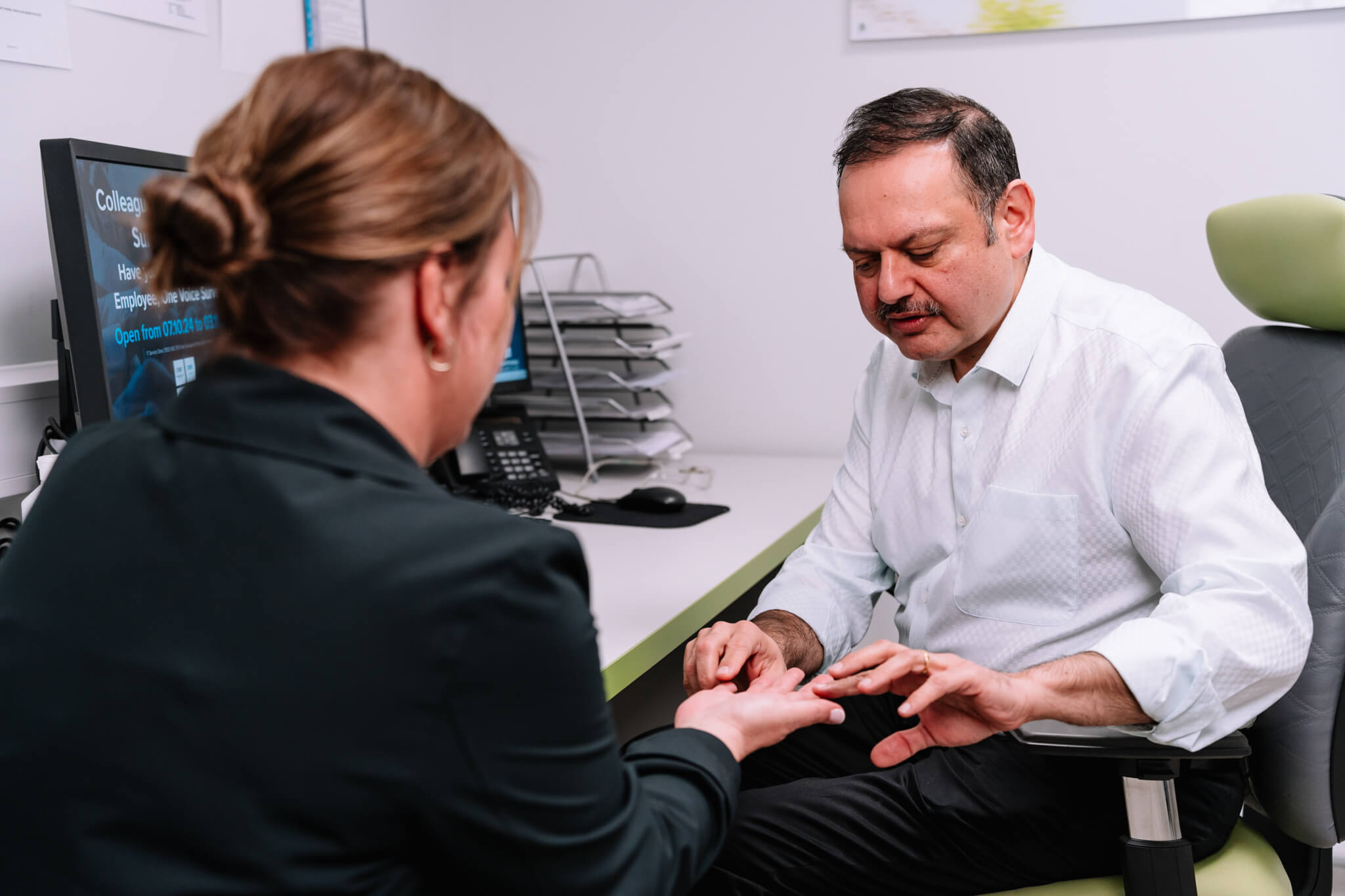Prior
Before your procedure, you will be asked not to eat or drink anything for a few hours. You may need to avoid certain medicines before your procedure. Your doctor will advise on these. Your health care team will review your medical history. You will change into a hospital gown.
During
The test is done in a cardiac catheter laboratory or ‘cath lab’. You will lie on your back on an X-ray table. Safety straps may be fastened across your chest and legs as the table may be tilted during the procedure. X-ray pictures will be taken from many angles.
During your procedure, a heart monitor will record your heart rate and rhythm and a probe on your finger will measure your oxygen levels.
A small amount of hair may be shaved from your groin or arm. A thin flexible tube, called a catheter is inserted and you will be given a local anaesthetic injection. You will be awake throughout the procedure.
The catheter is then passed through your blood vessels and up to your heart or coronary arteries using X-ray guidance.
A small amount of special dye called contrast is then passed through the catheter. You may feel a warm flushing sensation as the contrast is injected. The contrast dye is easy to see on X-ray images. As it moves through your blood vessels, your doctor can see its flow and identify any narrowed areas or blockages in your coronary artery.
The angiogram lasts for about 40 minutes to an hour. It may be longer if your doctor decides to perform treatment at the same time, such as balloon angioplasty and stent to open up a narrowed artery.
After
Following your coronary angiogram, the catheter will be taken out and direct pressure will be applied for a short time to ensure you have no internal bleeding.
Your blood pressure, pulse, breathing, and wound site will be checked regularly and recorded.
You will rest for several hours before going home. You may need to lie on your back during this time if the catheter was in your groin. If you had a stent placed, you may need to stay in the hospital overnight. You should have someone drive you home as you have had an anaesthetic.
Your wound may feel sensitive and bruised for a week or so afterward and you may be tired. You will be given advice on adopting a cholesterol-lowering diet.
Your cardiologist will discuss your initial results and you may have a follow-up appointment to further consider your treatment.


